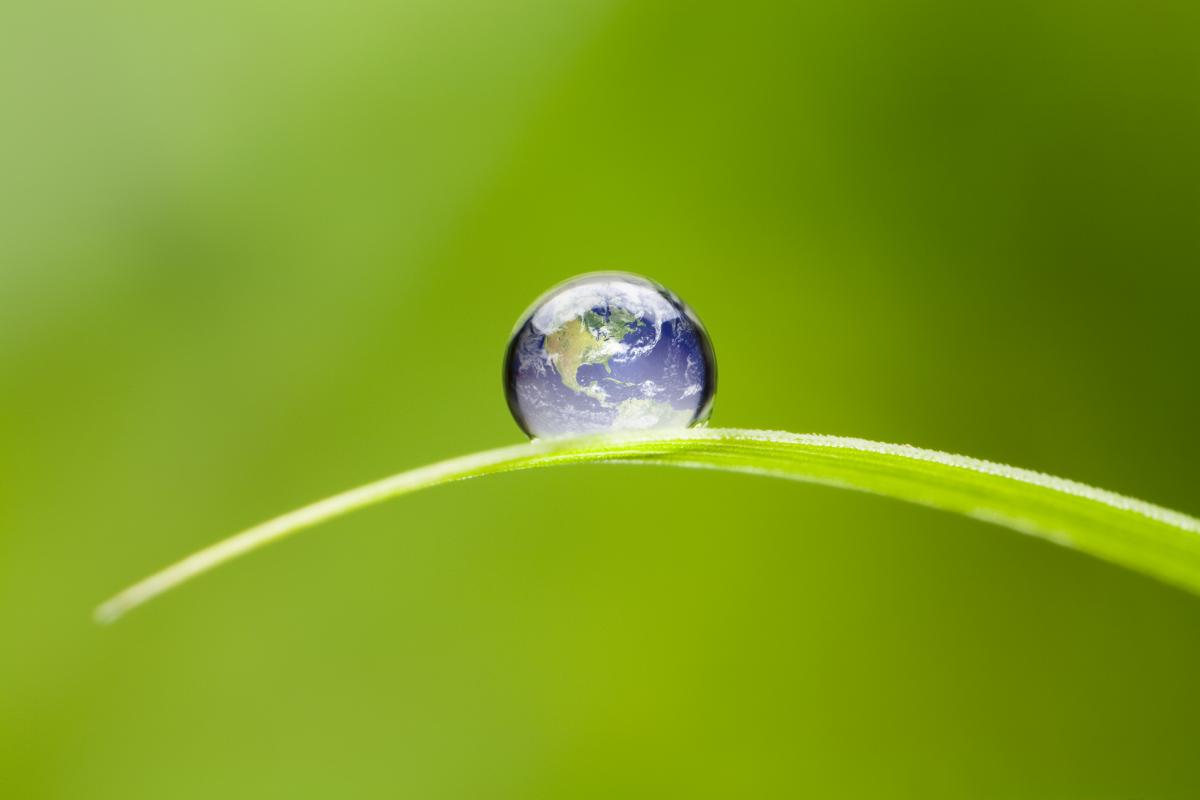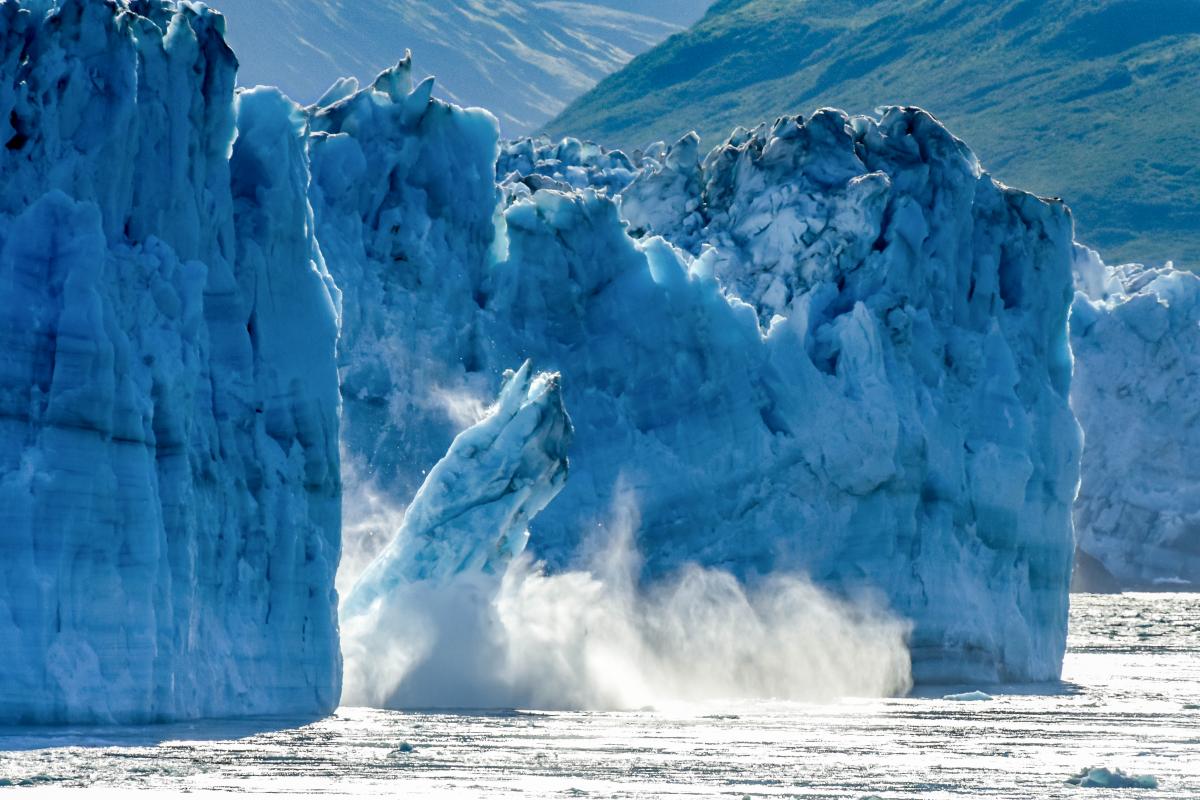The geopolitical implications of a changing climate

The valuation of financial assets is based on expectations of future returns—but what if the next half century is vastly different from the previous one? Environmental changes are affecting companies and countries in a number of ways. Investors need to understand the key environmental trends and grapple with the implications for geopolitics and markets.
To read the article in full, click here to download Ruffer's Responsible Investment Report.
Since the late 18th century, societies have experienced an unprecedented increase in material wealth. This has lifted billions out of poverty and those born today have, on average, a better quality of life and broader opportunities according to the Human Development Index. Yet industrialisation—the driver of this material progress—has had a devastating effect on the world’s natural capital. Consequently, the world is facing a significant loss of biodiversity, primarily caused by loss of habitat, pollution, acidification of the oceans and climate change.
 Financial assets ultimately derive their value from the real world, so the increase in financial capital—to the detriment of natural capital—cannot continue indefinitely on a planet with finite resources. The valuation of financial assets is based on expectations of future returns, but the half-century to come may be environmentally very different from the one just passed. Variability in the natural world is increasing sharply, whether that’s in temperature, rainfall or the strength of winds. Currently, neither the changing outlook nor the capacity for greater variability seem to be sufficiently incorporated into expectations of the future and, therefore, into the valuations of financial assets.
Financial assets ultimately derive their value from the real world, so the increase in financial capital—to the detriment of natural capital—cannot continue indefinitely on a planet with finite resources. The valuation of financial assets is based on expectations of future returns, but the half-century to come may be environmentally very different from the one just passed. Variability in the natural world is increasing sharply, whether that’s in temperature, rainfall or the strength of winds. Currently, neither the changing outlook nor the capacity for greater variability seem to be sufficiently incorporated into expectations of the future and, therefore, into the valuations of financial assets.
Growth and the greenhouse
The Earth’s temperature has fluctuated naturally for many millennia, but since the Industrial Revolution, global economic growth has been inextricably linked to the burning of fossil fuels. Through the emission of greenhouse gases, this has contributed to an increase of 1.1°C in global average temperatures above pre-industrial levels (1). As the world’s population grows and more people aspire to the lifestyle enjoyed by those in developed countries, the global demand for energy continues to rise. Although progress has been made in de-coupling economic growth from the emission of greenhouse gases, so far this has only been achieved in a few countries. Overall, greenhouse gas emissions are still increasing.
 The environmental impacts of climate change—such as storms, extreme temperatures, wildfires and droughts—are already affecting millions of people, disrupting global supply chains and inflicting damage to property and businesses. And while it is difficult to attribute a particular event to climate change, the frequency and severity of extreme weather events and natural disasters are increasing.
The environmental impacts of climate change—such as storms, extreme temperatures, wildfires and droughts—are already affecting millions of people, disrupting global supply chains and inflicting damage to property and businesses. And while it is difficult to attribute a particular event to climate change, the frequency and severity of extreme weather events and natural disasters are increasing.
A more volatile climate presents growing risks to the companies in which we invest, underscoring the need for them to manage their exposure to climate events to ensure their long-term financial performance. Yet some businesses are underestimating the urgency and significance of these chronic events. Analysing these risks matters—which is one of many reasons why Ruffer fully integrates environmental, social and governance (ESG) considerations into our investment process. But the implications for both companies and countries go far beyond extreme weather events, because climate change is exacerbating geopolitical tensions.
Water and conflict
Geopolitics and commodities have long been interlinked. Oil has dominated such interactions for the past 100 years or so and has contributed—if not directly, then indirectly—to a number of conflicts, particularly in the Middle East. Yet oil is no longer considered a scarce resource partly because shale oil production has allowed the United States to shift from being an importer to an exporter of oil and partly because concerns over climate change are driving an energy transition towards other sources of energy. Water, on the other hand, is arguably the most critical resource for human survival and its scarcity is driving up political tensions, particularly in Asia.
 The Tibetan plateau is sometimes known as the ‘third pole’, because its ice fields contain the largest fresh water reserves outside the Arctic and Antarctic. The plateau feeds 10 major rivers, including the Yangtze in China and the Brahmaputra that flows through China, India and Bangladesh. Collectively, these rivers provide drinking water to more than 20% of the world’s population (2). Historically, glaciers have been effective stores of monsoon rains, acting as huge reservoirs that release this water over time. Climate change has already had a devastating effect on the Tibetan plateau, with glacial retreat accelerating in recent years because the build-up of ice and snow is no longer sufficient to match the run-off.
The Tibetan plateau is sometimes known as the ‘third pole’, because its ice fields contain the largest fresh water reserves outside the Arctic and Antarctic. The plateau feeds 10 major rivers, including the Yangtze in China and the Brahmaputra that flows through China, India and Bangladesh. Collectively, these rivers provide drinking water to more than 20% of the world’s population (2). Historically, glaciers have been effective stores of monsoon rains, acting as huge reservoirs that release this water over time. Climate change has already had a devastating effect on the Tibetan plateau, with glacial retreat accelerating in recent years because the build-up of ice and snow is no longer sufficient to match the run-off.
The geopolitical situation has the potential to become much worse, and quickly. Countries are under pressure to reduce their greenhouse gas emissions to meet the goals of the Paris Agreement and air pollution is a problem in towns and cities across Asia. Against this backdrop, China is developing many more hydroelectric dams along the rivers that flow from the Tibetan plateau. By gaining control of its neighbours’ water supply, China would have colossal leverage—a fact that has not escaped the attention of India and others.
A Polar Silk Road?
The Arctic is also suffering from significant loss of ice where the extent of the sea ice (measured at its minimum in September each year) has fallen, on average, by 12.8% per decade since 1981 (3). To put this in perspective, an area of ice the size of the United Kingdom and Ireland disappeared from the Bering Sea in February 2019, when the extent of the sea ice was supposedly at its maximum. As the disappearance of sea ice amplifies global warming (because less sunlight is reflected and more is absorbed by the oceans), the extent of sea ice is expected to continue to fall—an example of the acceleration of climate change when particular tipping points are reached.

The melting of the Arctic sea ice is opening up new shipping routes such as the Northern Sea Route—often referred to as the Polar Silk Road—connecting Asia and Europe, which will dramatically reduce distances travelled and journey times. The melting ice will also bring opportunities for mineral and petroleum extraction in areas that were previously covered by permafrost. This is intensifying tensions between Russia and the United States, with other large powers such as China also vying for resources above the Arctic Circle. For decades, the policy of the United States towards the Arctic has been characterised by indifference. The offer to purchase Greenland—an acknowledgement of the island’s strategic importance—and its blocking of a joint declaration from the Arctic Council (due to the inclusion of a reference to climate change) are examples of the recent reversal of this policy stance.
Russia and China, meanwhile, have both taken advantage of the United States’ absence to further their commercial and, in the case of Russia, military interests in the region. Russia has spent billions of pounds building new military bases, and upgrading abandoned ones, to give Moscow almost complete coverage of its northern coastline since announcing its intention to increase its presence in the region in its Military Doctrine of 2014. Russia has also conducted significant military operations, prompting NATO in 2018 to conduct its largest operation since the Cold War, involving 50,000 troops in northern Norway. Opportunities due to the retreating sea ice have been particularly embraced by China, which has invested around $90 billion in the Arctic region since 2012, including the financing of strategic assets in both Greenland and Russia (4).
Given that the United States is unlikely to accept Russian and Chinese dominance in the region, the Arctic could become a geopolitical flashpoint.
 The climate and migration
The climate and migration
For thousands of years, environmental changes have shaped patterns and levels of human migration, which is driven by both extreme weather events and natural disasters but also by slow-onset events including desertification, loss of biodiversity and rising sea levels. During the first six months of 2019, 7 million people were displaced as a result of weather-related disasters (5). Parts of Central America, as well as Northern Africa and the Middle East, have already been seriously affected by environmental changes, including a sharp reduction in rainfall that has contributed to increasing migration to the United States and Europe.
Currently, climate change migrants cannot claim refugee status, because climate change falls outside the scope of the 1951 Refugee Convention. In the current political environment, this issue is proving particularly difficult to solve. While migration has many causes—and demographic, political, economic and environmental issues are often difficult to untangle—it is prudent to assume that if environmental migration continues to increase, it will add to tensions within and between countries.
 A word to investors
A word to investors
The effects of climate change can be felt in all regions of the world, involving the largest countries, stoking political tensions and intensifying geopolitical instability.
The longer greenhouse gas emissions continue to rise, the worse the effects of climate change will be. This will greatly affect geopolitical instability and make the political co-operation necessary to solve the problem of climate change significantly harder to achieve.
For investors, markets don’t yet seem to be accounting appropriately for these changes, which creates both risks and opportunities. Understanding and navigating our changing environment, therefore, will be an investment challenge for many decades to come.
1. WMO, www.public.wmo.int
2. China Water Risk Report (2018), No Water, No Growth - Does Asia have enough water to develop?
3. NASA, www.climate.nasa.gov
4. Financial Times (2019), US envoy warns of Chinese and Russian aggression in Arctic
5. Internal Displacement Monitoring Centre, www.internal-displacement.org
 To read the article in full, download Ruffer’s Responsible Investment Report.
To read the article in full, download Ruffer’s Responsible Investment Report.
The views expressed in this article are not intended as an offer or solicitation for the purchase or sale of any investment. The information is fact based and does not constitute investment research, investment advice or a personal recommendation, and should not be used as the basis for any investment decision. Ruffer LLP is authorised and regulated by the Financial Conduct Authority.






